Highly revered in ancient Persia, Greece, and Rome, walnuts weren’t just sustenance; they were symbols of wisdom, immortality, and divine power. While common men were eating acorns, the gods were allegedly eating walnuts. In fact, the Latin name for walnuts became Juglans regia meaning “Jupiter’s acorns,” referring to the Roman god Jupiter (who was the equivalent to the Greeks’ Zeus).
Millennia later, walnuts have seamlessly transitioned from “the food of gods” to modern superfoods, thanks to science-backed research proving their remarkable nutritional benefits. Beyond taste, walnuts boast an exceptional nutritional profile, containing one of the best vegan sources of omega-3 fatty acids. They’re also good sources of vitamin E, B vitamins, and minerals like magnesium, potassium, copper, and zinc.
A 2023 analysis of recent US dietary patterns found that many people are not consuming enough nutrients such as magnesium, fiber, and potassium. For kicks, the researchers asked their computer what would happen if those people added just ¼ cup or about 12–14 halves of walnuts a day to their usual diets, with no other changes. Even that tiny change improved their diet quality and brought their levels of under-consumed nutrients into the “adequate” range.
So what types of walnuts are out there? And if you want to add walnuts to your daily diet (and eat like a Roman god), what are some of the best ways to do so?
Types of Walnuts

There are two main types of walnuts you may encounter in stores and farm stands: English (aka Persian) walnuts and black walnuts. The walnuts you find in the grocery store are almost certainly the English kind. They’re also the ones most often used in cooking, especially in baked goods. They have a soft shell that’s pretty easy to crack with a regular nutcracker.
Black walnuts are the Fort Knox of nuts. They have an extremely hard shell and require industrial-strength tools to open. A friend with a black walnut tree harvests them by spreading them on his driveway and running his truck back and forth over them until the green hulls split open. (He says you can also use a grout mixing bit attached to a corded power drill, but the truck is more fun.)
While there are traditional walnut recipes that include black walnuts or their flour, such as the Pennsylvania Dutch Black John cake, black walnuts are now mainly used in complementary medicine. They’ve been shown to reduce inflammation, which is an underlying cause and contributor to many chronic diseases.
You can also buy or make black walnut oil for sauces and dressings. Handle with care, though; the oil can stain your skin, and the stains can last for weeks, regardless of how much you scrub.
You can easily find shelled English walnuts in most grocery stores. But the unshelled ones are a bit harder to find, especially black walnuts (unless you have your own tree). Look in the bulk bins of natural food stores or in specialty and farmers markets.
How to Store Walnuts
Because walnuts are high in oil, they can go rancid when exposed to warm temperatures for a long period of time. If you’re unsure if they’re still good, give that walnut a sniff. Fresh walnuts smell mildly nutty and have a slightly sweet taste. Rancid walnuts, on the other hand, smell like paint thinner (I’m happy to report that I don’t know what paint thinner tastes like); please don’t eat them.
To keep your walnuts from turning into turpentine, keep them cool, cold, or even frozen. After buying a bag of walnuts, store them unopened in their original packaging. Once you’ve opened the bag, or if you got scoops of them from a bulk bin, keep them in an airtight container. Here’s a Ziptop set that we recommend.)
Keep walnuts whole until you’re ready to use them. The happy life span of a chopped walnut is quite short as rancidity is caused by oxidation, and the more exposed surfaces, the quicker the oxygen in the air will turn the oil into something akin to an industrial solvent.
Frozen walnuts can last up to a year or even longer. When you’re ready to use them, transfer them to a refrigerator to thaw, where they’ll remain fresh for up to three months. (Unless, of course, that refrigerator is in a spaceship traveling at the speed of light, in which case something weird happens to time, according to this movie I watched in middle school.)
In the fridge, keep your walnuts separate from strong-smelling foods to prevent them from taking on unwanted flavors. (“Hey, who wants a Fudgy Chocolate Chip and Walnut and Garlic Pesto Brownie?”)
How to Toast Walnuts
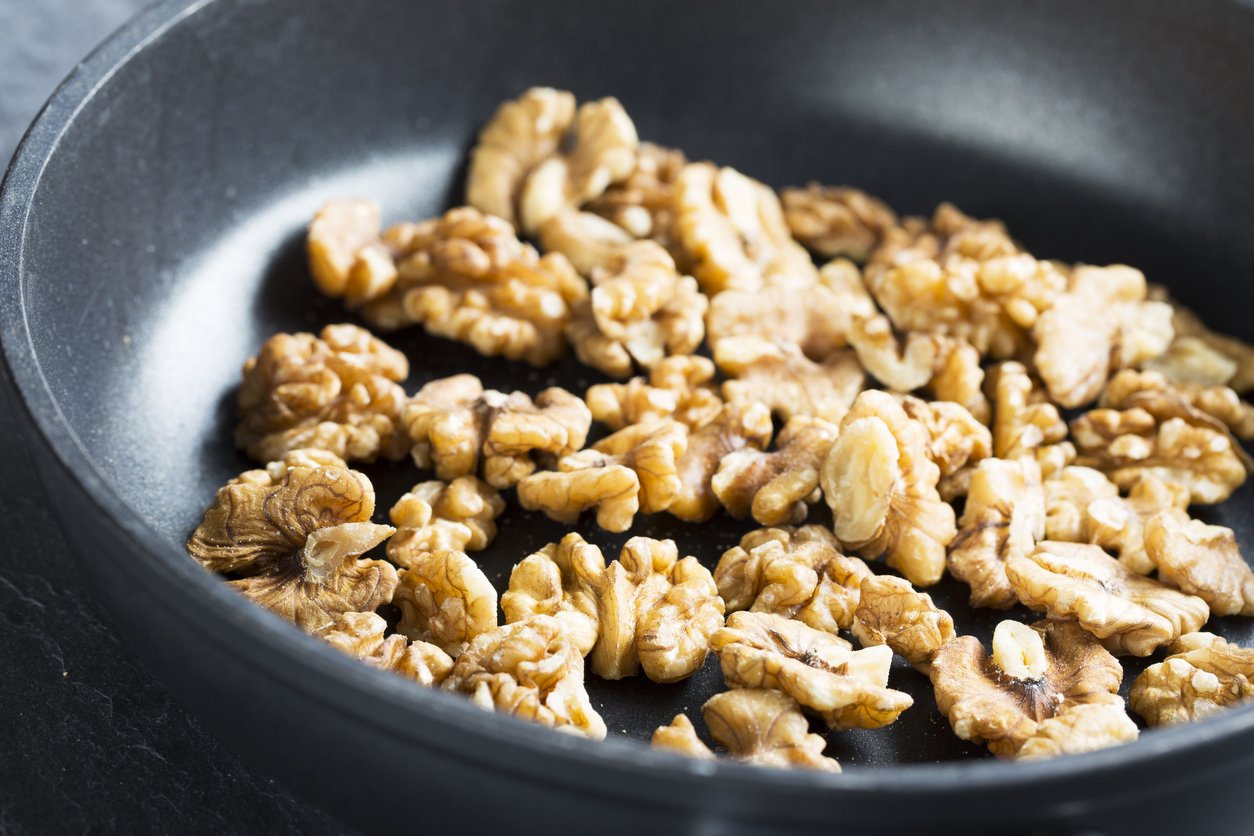
Raw walnuts are awesome, and I would never argue with anyone who says that. At the same time, toasting your walnuts can enhance their natural flavor and impart them with a satisfying crunch that goes really well in many dishes.
There are a couple of techniques you can use to toast your walnuts. One is to place them in a single layer on a cookie sheet and bake in a 350° F (175° C) oven for 8–10 minutes until just starting to turn golden brown.
Here’s a short video demonstrating this process, courtesy of the folks at the California Walnut Board:
https://www.youtube.com/watch?v=w3uW1ZHpOvg
If you want a more intimate and hands-on experience of walnut toasting, you can toss them in a pan on your stovetop for 2–5 minutes. Since they burn easily, toss and stir often and use medium heat (or even a bit lower, depending on your stove). Do not get distracted, even if your child or significant other comes in, puts on oven mitts, and pretends to be a lobster. Also, make sure not to overcrowd the pan to ensure even roasting.
Walnut Uses
Walnuts just want to be your friend, and they’ll happily fit into both sweet and savory recipes. Here are some uses for walnuts in your diet:
- Baked goods
- As a topping for oatmeal, yogurt, or smoothie bowls
- Nut and seed butters
- In granola
And if it’s savory you’re after, here are a bunch of options on how to use walnuts:
- Mixed with lentils for fillings in tacos or veggie burgers
- As a topping for salad
- Blended into dressings, sauces, and spreads
- Stuffed into vegetables
- In a vegan charcuterie board
- In homemade crackers
Fresh Walnut Recipes
Walnuts are so much more than just your average tree nut. They’re a delicious and crunchy topping to add to your morning oats or salad. They make an excellent base for sweet or savory sauces and spreads. And they add a bonus bit of texture and nutrition to delectable baked goods. From dressings to brownies to porridge, there’s something for everyone in this walnut recipe roundup! Here are some ideas on how to cook and bake with walnuts.
1. Walnut Apple Amaranth Porridge
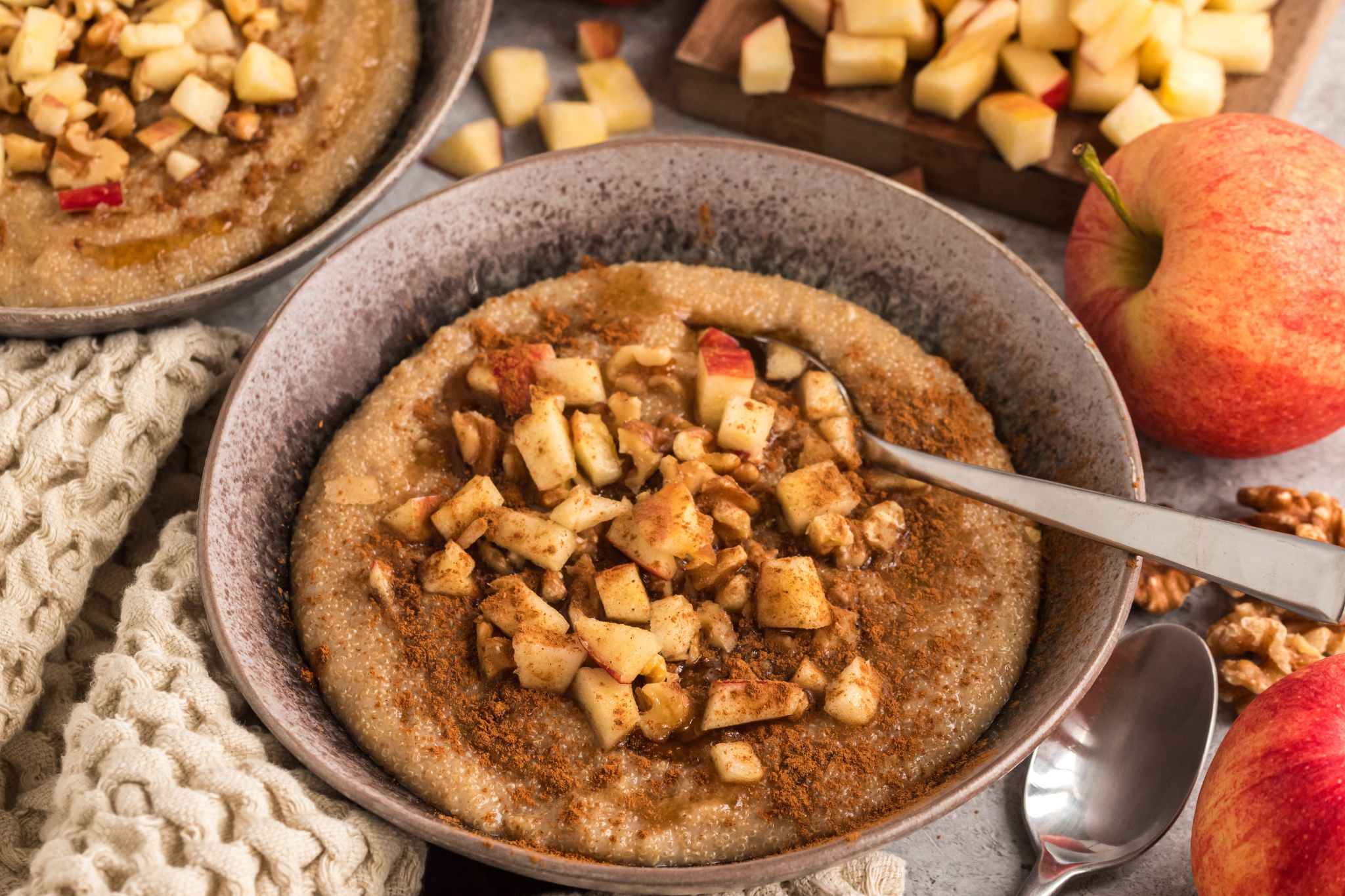
Walnut Apple Amaranth Porridge is a harmonious blend of naturally sweet apple, nutty amaranth, and buttery walnuts creating a warm breakfast that is equal parts cozy and nutritious. Plus, the satisfying crunch of walnuts in your porridge not only adds a delightful texture but also offers a healthy source of fats and protein. This fall-themed porridge will keep you full and satisfied, making breakfast time an autumn delight!
2. Roasted Fig and Walnut Arugula Salad with Wheat Berries and Vegan Feta
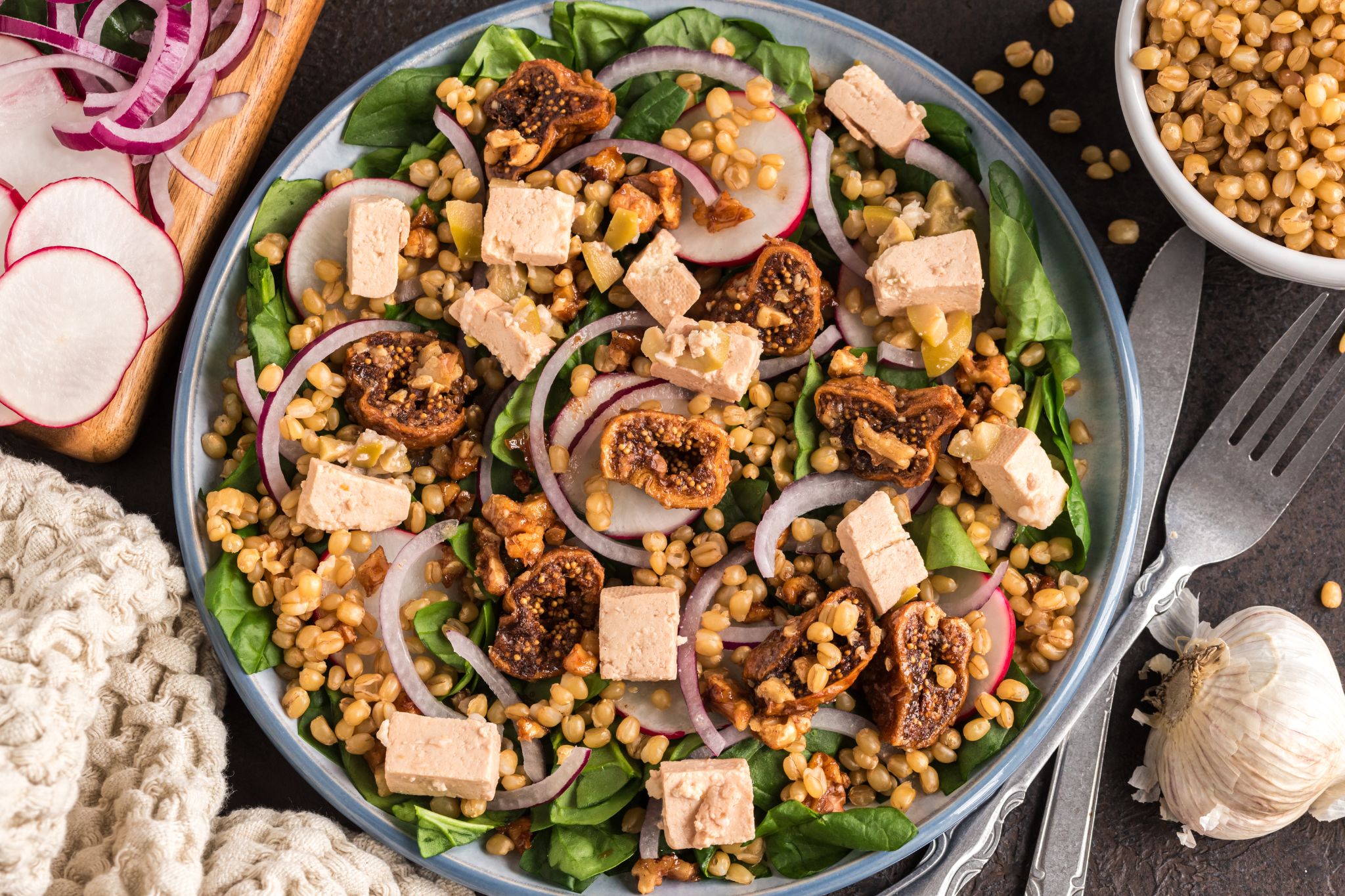
Walnuts are the pièce de résistance in this Roasted Fig and Walnut Arugula Salad with Wheat Berries and Vegan Feta. With so many delicious ingredients, walnuts not only tie all of them together but also manage to stand out in the crowd, too. They add a significant helping of omega-3 fatty acids along with essential minerals, including magnesium, manganese, and copper. Meanwhile, you’ll also experience a sweetness from the roasted fig, bitterness from the arugula, and tanginess from the vegan feta. This fresh walnut recipe is a veritable feast for your taste buds!
3. Apple Walnut Sage Dressing
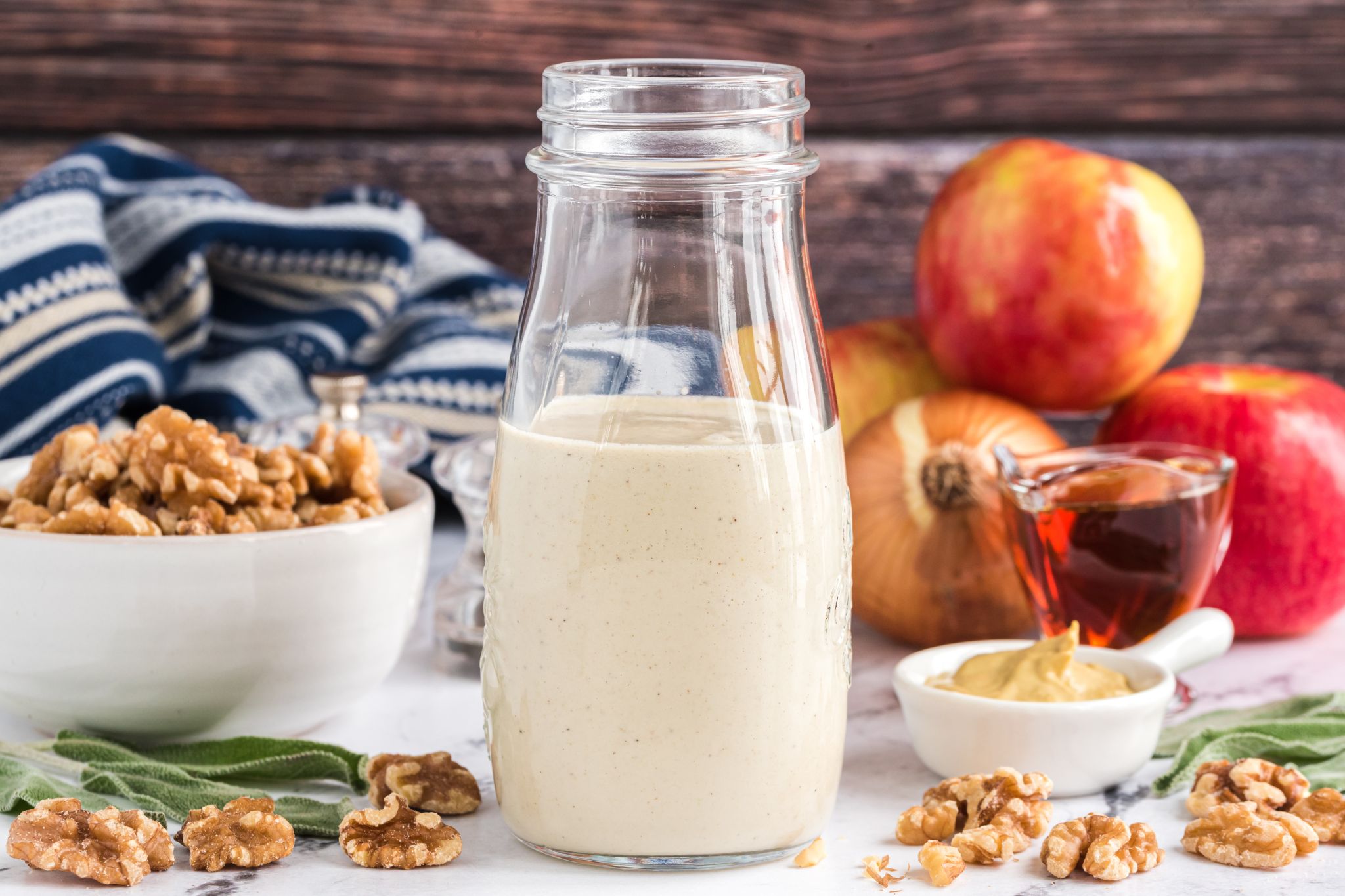
Plant-based dressings like this sweet and savory Apple Walnut Dressing are incredibly versatile — and much healthier than a store-bought salad dressing. You can easily make this dressing with whole foods and without oil (thanks to walnuts!). This walnut recipe is also super fast to make, usually coming together in minutes. Plus, it’s nutrient-packed, making plant-based meals extra scrumptious. The versatility of walnuts never ceases to amaze!
4. Walnut Pesto Angel Hair Pasta
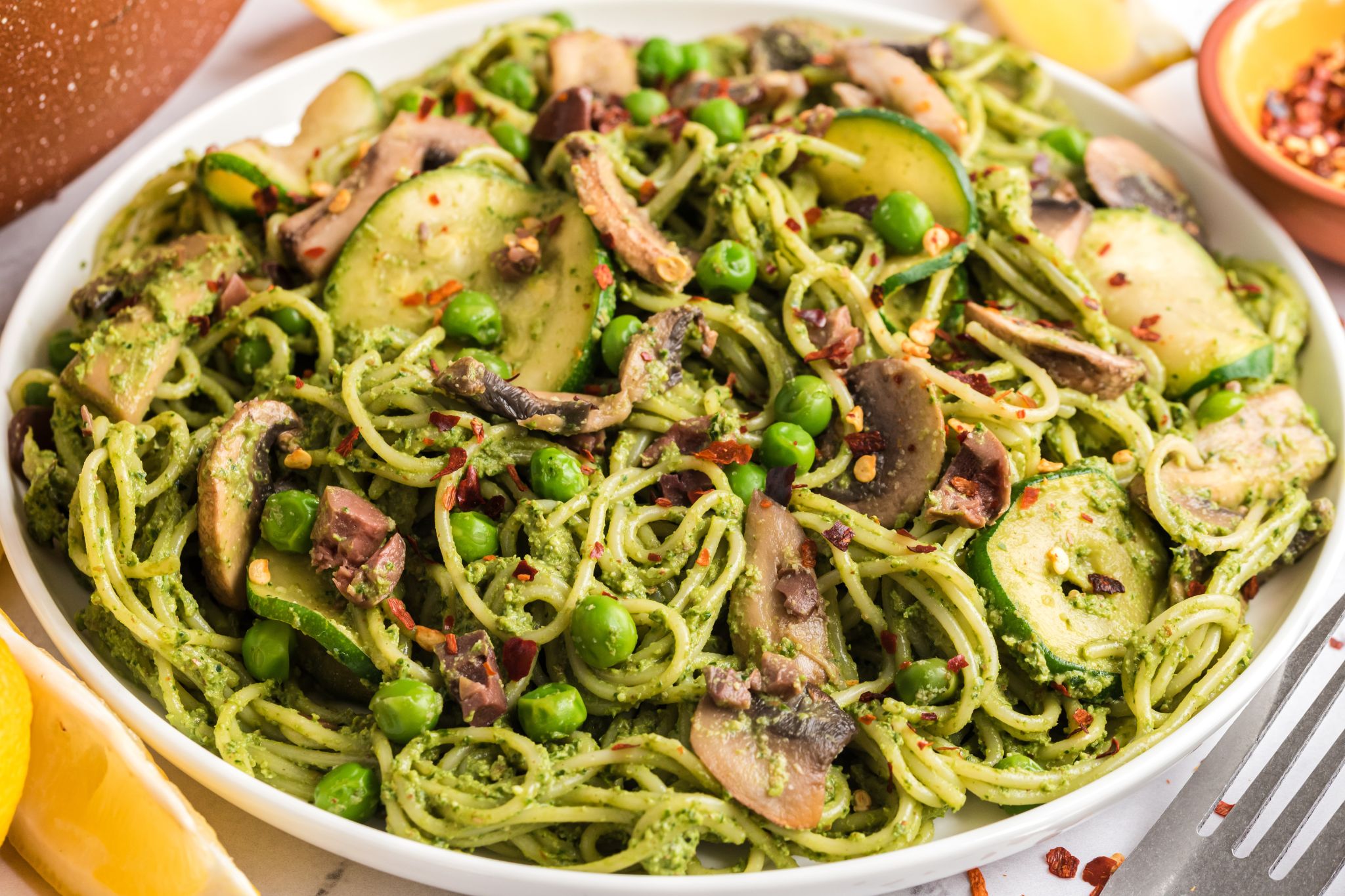
Introducing Walnut Pesto Angel Hair Pasta! The combination of kale, avocado, basil, garlic, and nutritional yeast makes the pesto super nourishing. And it’s even more elevated when you add omega-3-rich walnuts to it. Walnuts offer the perfect balance of nutty flavor and buttery texture, which makes them a fantastic addition to plant-based sauces and dressings. Altogether, with warm angel hair pasta, you’ll get a comforting, wholesome, and flavorful walnut dish the whole family will love!
5. Vegan Walnut Parmesan
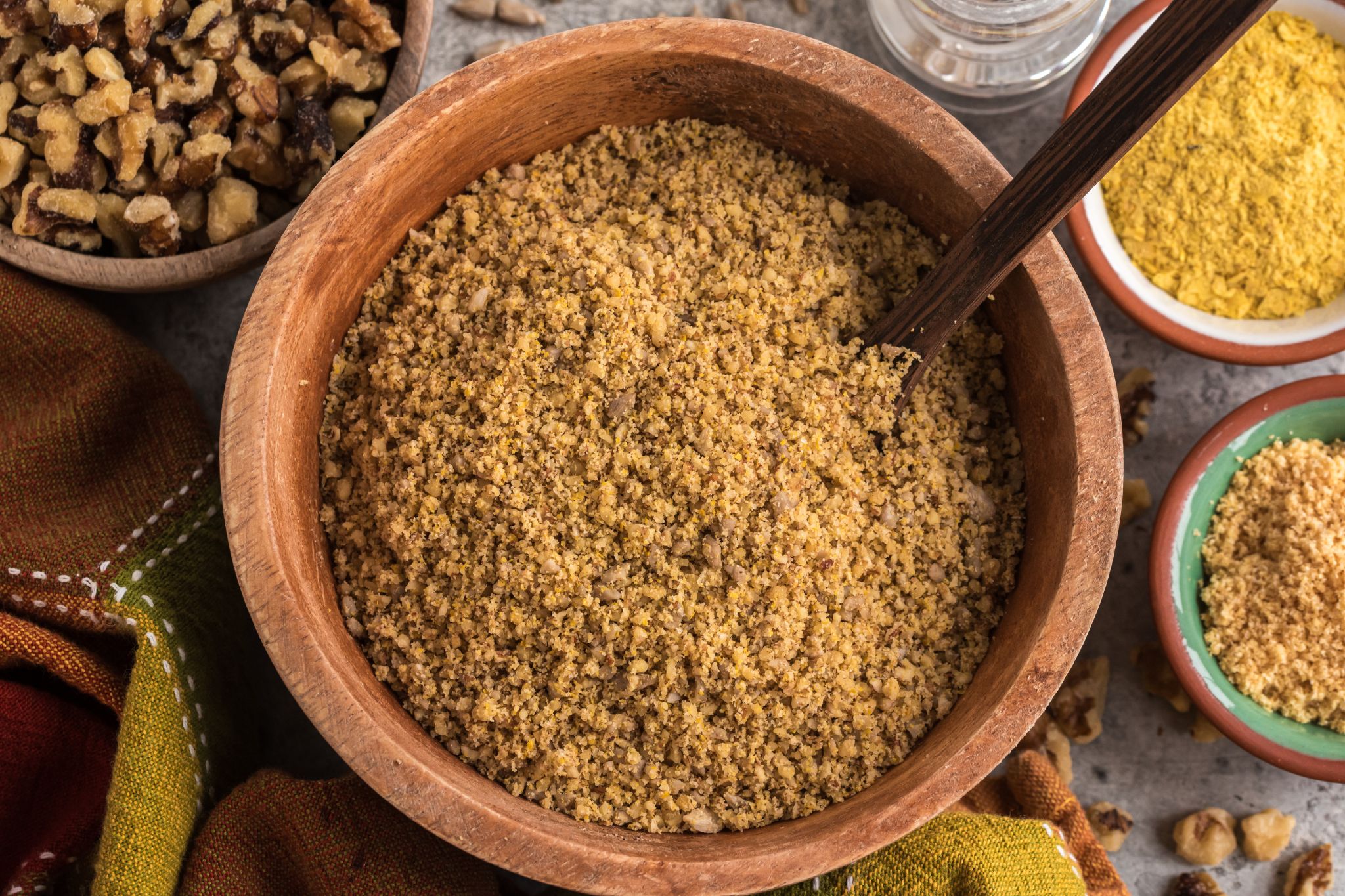
This Vegan Walnut Parmesan offers a similar flavor profile to traditional parmesan cheese, thanks in part to walnuts’ healthy fats carrying the nutritional yeast’s umami flavor! Seasoned with umami flavors from the nutritional yeast, onion powder, and garlic powder, this walnut and sunflower seed parmesan is an easy-to-sprinkle and delicious-to-devour plant-based condiment. It’s a wonderful complement to many dishes, including pasta, steamed vegetables, casseroles, and stews — or anything that calls for a crumbly cheese topping.
6. Cashew Walnut Butter

Making homemade nut butter can be one of the most simple yet rewarding things you can do to better your health. Plus, it’s fun and delicious! This walnut recipe idea combines cashews and walnuts, resulting in a creamy, slightly sweet, and buttery spread. You can also stir in chia or hemp seeds or add cacao powder for a chocolate-infused nut butter.
7. Fudgy Chocolate Chip and Walnut Brownies
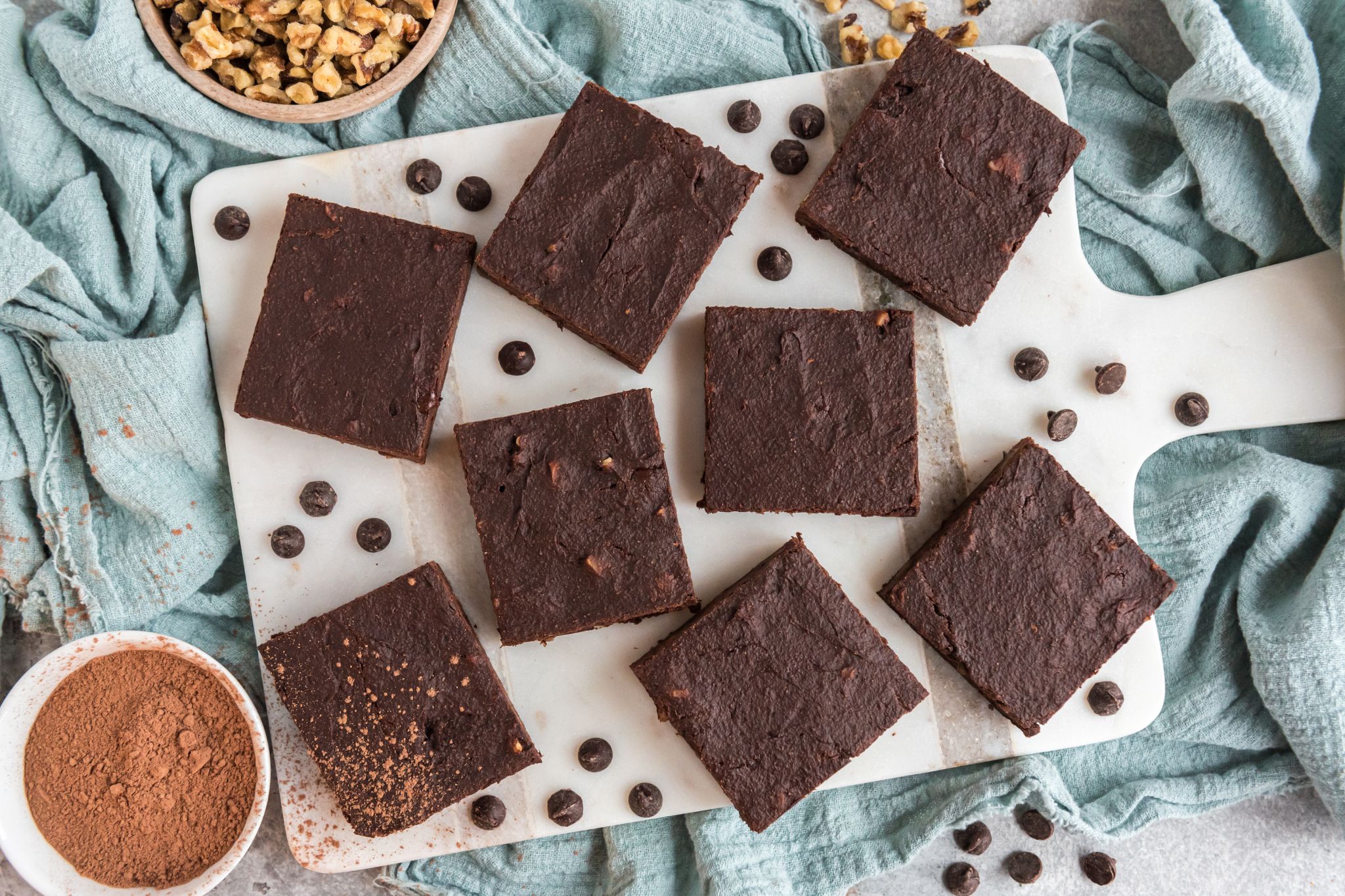
What’s better than a warm fudgy brownie? If you guessed a warm fudgy brownie with walnuts, you’d be correct! These Fudgy Chocolate Chip and Walnut Brownies may seem too good to be true, but you certainly can have your (plant-based) brownie and eat it, too. Made with fiber-rich oat flour, fair-trade dark chocolate, applesauce, and mashed banana, these brownies will have you coming back for more with their dense, fudgy texture. Make these walnut brownie recipes anytime for a naturally sweet treat you’ll be excited to sink your teeth into!
Go Nuts with Walnuts!
From ancient Rome to contemporary kitchens, walnuts have stood the test of time. Their impressive nutritional profile makes them an easy choice for health-conscious people, and their nutty, earthy taste ensures that even gourmands will enjoy dishes that feature walnuts. In a nutshell — ha! — whether you’re cooking sweet or savory recipes, consider walnuts as a lovely addition to everyday and festive meals.
Tell us in the comments:
-
Have you ever eaten a dish made with black walnuts?
-
What are your favorite ways to eat English walnuts?
-
Which walnut recipe idea will you try next?
Featured Image: iStock.com/Gokcemim

